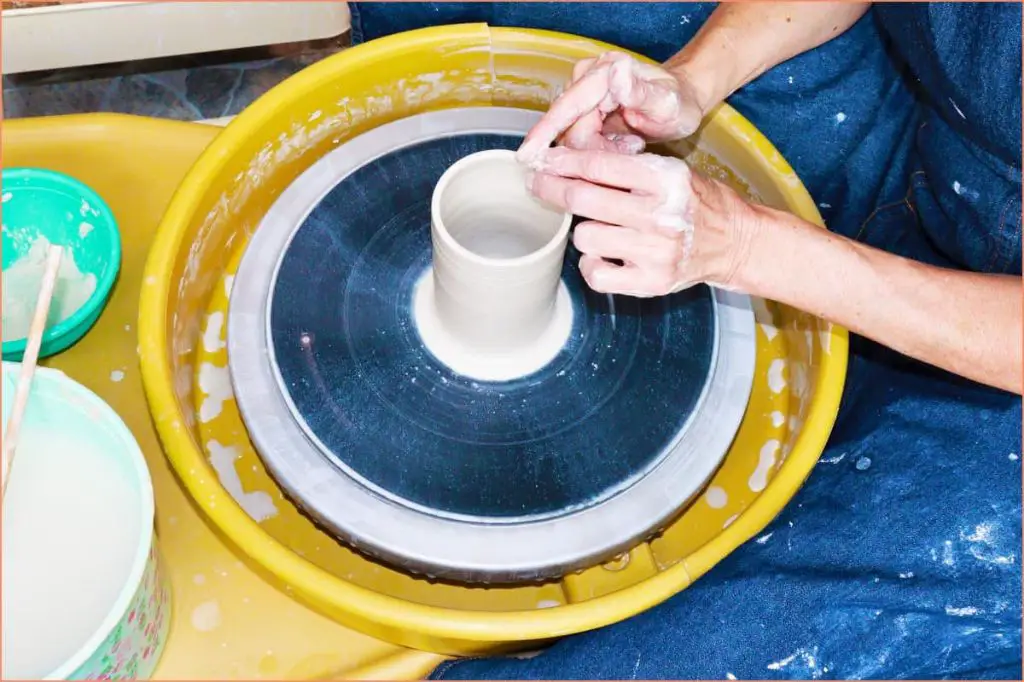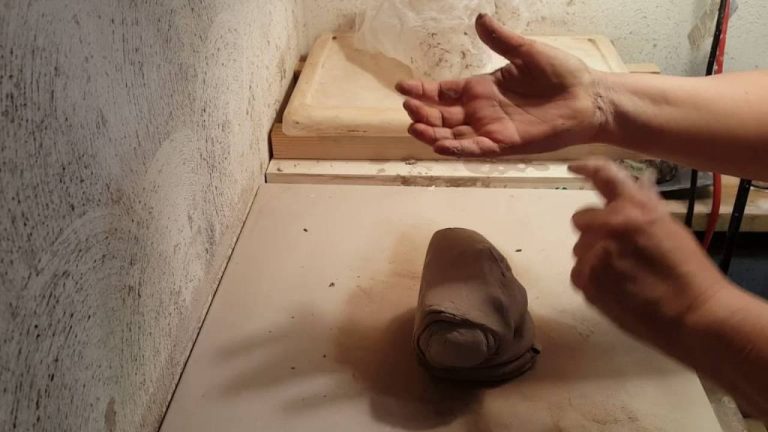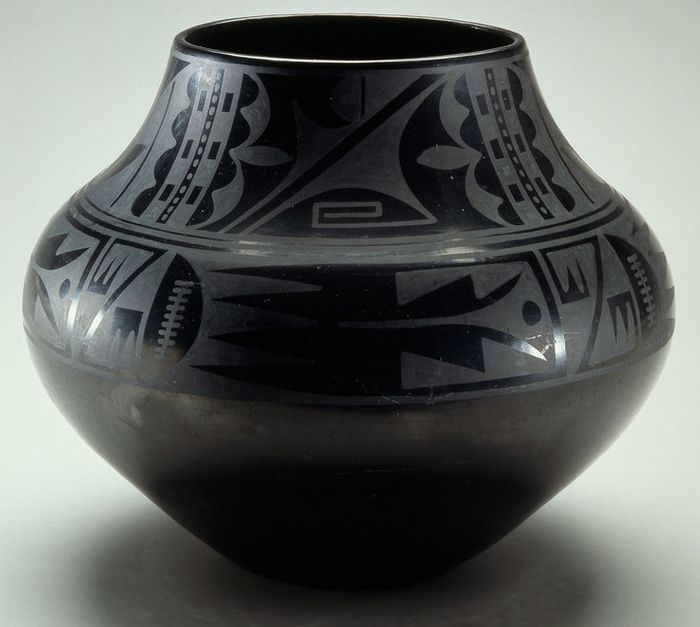What Is The Difference Between Throwing And Handbuilding Pottery?
Pottery making involves two main techniques: throwing on a pottery wheel and handbuilding. Wheel throwing uses a rotating wheel to shape clay into symmetrical forms like cylinders, bowls, and vases. Handbuilding involves shaping clay by hand using techniques like pinching, coiling, slab building, and molding. Both methods have their own creative possibilities and challenges. Wheel throwing allows for consistency and repetition in shapes, while handbuilding offers more freedom and variability in form. This article will provide an overview of the key differences between wheel throwing and handbuilding pottery.
Wheel Throwing
Wheel throwing is a pottery technique done on a potter’s wheel. The potter uses the rotating wheel head and their hands to shape clay into ceramic forms like bowls, vases, and cylinders Guide to Ceramic Wheel Throwing – The Crucible. As the wheel spins at a constant speed, the potter can apply pressure to raise, elongate, indent, and otherwise manipulate the clay into the desired shape.

The mechanics of a pottery wheel involve a rotating circular platform or wheel head powered by a motor or foot pedal. The rotational kinetic energy allows shaping forces applied by the potter’s hands to smoothly form the clay. Speed controls give potters precision over the force applied How Does a Pottery Wheel Work? – Art and Mechanics. Expert wheel throwing requires skill in centering the clay, opening walls, pulling up forms, and refining details.
Handbuilding
Handbuilding is a pottery technique in which clay objects are formed by hand instead of using a potter’s wheel. Some common handbuilding techniques include pinching, coiling, and slab building. Handbuilding allows potters to create asymmetric and sculptural forms that are more difficult when working on the wheel.
With handbuilding, potters start by wedging or kneading the clay to remove air bubbles and make the clay uniformly moist and plastic. The clay can be shaped while still soft, or allowed to dry and harden to a leather-hard state before forming. Potters use their hands, simple tools like ribs and loop tools, molds, and templates to create both functional and decorative ceramic wares.
Handbuilding techniques like pinch pots, coiled pots, and slabs can be used to make vases, cups, bowls, plates, and more. The clay is joined using the score and slip method by scoring or scratching the surface and applying watered-down clay slip. Handbuilt pieces are dried slowly and fired in a kiln to harden and complete the ceramic process. Glazes and decorations can be added before or after firing.
Handbuilding allows more freedom and creativity in forming clay compared to throwing on the wheel. It can also be easier for beginners to learn. Handbuilding develops skills in visualization, planning, and problem solving to construct complex and asymmetric forms.
Clay Preparation
The preparation of clay differs for wheel throwing versus handbuilding. For wheel throwing, the clay must be wedged thoroughly to remove air bubbles and create an even consistency. Wedging aligns the clay particles and makes the clay more plastic and smooth. This allows the clay to center properly on the wheel and withstand the pressures of throwing without cracking or tearing [1].
In comparison, handbuilding does not require as much wedging. The clay is still kneaded to achieve a uniform texture, but excessive wedging can make the clay too stiff for handbuilding techniques. The clay used for handbuilding retains more moisture and malleability compared to throwing clay. This allows the clay to be shaped by hand without becoming too firm or cracked [2]. Ultimately, throwing clay must withstand centrifugal force, while handbuilding clay needs more flexibility for shaping, joining, and detailing.
Forming the Clay
The process of forming the clay differs greatly between wheel throwing and handbuilding. With wheel throwing, the clay must be centered on the pottery wheel before it can be shaped. Centering involves placing a ball of clay on the wheel head and applying pressure to form it into a cone shape while the wheel spins at a constant speed. The goal is to center the clay both horizontally and vertically so it does not wobble as the wheel turns. It takes practice to properly center clay on the wheel.
Once centered, the clay is ready to be opened up using your thumbs to create an interior space. Opening the centered clay involves pushing your thumbs into the top of the cone while applying pressure outward. The speed of the spinning wheel keeps the clay from collapsing while it is thinned and shaped. Wheel throwing requires coordination to control the spinning clay and takes significant practice (source).
In contrast, handbuilding does not require a pottery wheel. The clay is shaped entirely by hand using techniques like pinch pots, coiling, and slab building. The clay can be wedged and conditioned by hand, then formed into the desired shapes. Handbuilding allows for asymmetry and shapes not possible on the wheel. It provides total control over the form and surface texture. While handbuilding does not require centering or balancing spinning clay, controlling the structure and attachments of the hand formed pieces presents its own challenges.
Attachments
One key difference between wheel throwing and handbuilding is how the pieces are attached together. With wheel throwing, potters will often make separate pieces on the wheel and then join them together later. Common attachment methods include using “slip and score” and creating lugs or coils for joining. With handbuilding, pieces are often formed together from the start rather than made separately.
For wheel thrown pieces, potters commonly use the slip and score technique. This involves applying watered down clay slip to the surfaces to be joined, scoring or scratching the surfaces, and then pressing the pieces together. The slip helps bond the two surfaces together as it dries. When joining wheel thrown pieces, lugs or simple coils may also be thrown onto one piece to attach to another part. The scored surfaces and clay chemistry allow the pieces to form one unified whole as they dry.
With handbuilding, pieces are often intentionally created and shaped together rather than made separately. For example, a slab box takes advantage of the natural bonding properties of clay to form a seamless whole. With coil and pinch pots, the coils or slabs are continuously joined as the vessel is built up. Fewer separate attachments need to be made compared to wheel throwing. When attachments are made, slip and score can be used in a similar way to bond the clay surfaces.
Overall, wheel throwing relies more on attaching multiple thrown pieces, while handbuilding shapes clay into a cohesive object from the start. However, both methods take advantage of the natural adhesive properties of clay slip when bonds need to be formed between surfaces.[1]
[1] https://potterycrafters.com/wheel-throwing-vs-hand-building-the-differences-explained/
Surface Decoration
Thrown and handbuilt pottery lend themselves to different decorating techniques. With wheel thrown pieces, the surface tends to be smoother and more uniform, making it ideal for techniques like glazing, slip trailing, and sgraffito. According to https://www.tanakitaceramics.com/post/handbuilding-vs-wheel-throwing, the centrifugal force from throwing results in an ideal surface for glazing as it pushes any air bubbles out of the clay body, leaving a smooth canvas ready for glaze.
Handbuilt surfaces are often more textured and irregular. While glazing is still an option, handbuilt ceramics may showcase decorative techniques like carving, incising, and paddling which interact with the clay’s unique surface qualities. Attachments like coils, slabs, and appliques can also be used decoratively on handbuilt wares. According to https://obby.co.uk/blog/hand-building-vs-wheel-throwing-learn-how-to-make-pottery/, the textured nature of handbuilt surfaces lends itself well to more painterly decoration like using underglazes, overglazes, and colored slips.
Drying & Firing
There are some key differences in how wheel thrown vs handbuilt pieces are dried and fired. Wheel thrown pieces tend to have thinner, more uniform walls so they can dry faster than handbuilt pieces which often have thicker, varied wall sections. Handbuilt pieces need to dry slowly and evenly to prevent cracking while wheel thrown pieces can dry faster. For firing, thicker handbuilt pieces may need a longer firing schedule or additional hold times at lower temperatures to allow heat to fully penetrate the clay body. Uneven drying can also lead to explosions from trapped moisture. Some tips when firing handbuilt pieces is to use a slower bisque firing schedule, fire on stilts to allow airflow, or do a water smoking step before bisquing. When glaze firing, longer hold times may be needed to fully flux thicker handbuilt pieces. Always check for proper bisque firing to cone 06 and do test tiles when developing a glaze firing schedule. Firing too fast can lead to glaze defects like pinholing, cracking, or underfired colors.
Use Cases
Both wheel throwing and handbuilding have their advantages and ideal use cases. Wheel throwing is preferable for making multiples of the same form quickly and efficiently. The rotation of the pottery wheel allows the clay to be shaped into symmetrical rounded forms like bowls, mugs, and vases. Wheel throwing excels at objects like these where symmetry and uniformity are desired.
Handbuilding, on the other hand, offers more flexibility and creativity. It is the preferred method for making one-of-a-kind sculptural pieces, decorative objects with embellishments, and items with asymmetric or faceted shapes. Handbuilding also allows joining multiple separately built components like handles and spouts. Pieces that require extreme precision or detail work are also better suited to handbuilding.
In summary, wheel throwing is ideal for making multiples of symmetrical rounded objects efficiently, while handbuilding allows more creative freedom for unique, embellished, or intricate forms.https://www.tanakitaceramics.com/post/handbuilding-vs-wheel-throwing
Conclusion
In summary, the main differences between throwing and handbuilding pottery are the technique, tools required, experience level, clay preparation, and surface decoration. Wheel throwing uses a pottery wheel to shape clay into symmetrical forms, while handbuilding involves shaping clay by hand into freeform shapes. Wheel throwing requires more specialized equipment like a pottery wheel and requires more skill to center and raise the clay. Handbuilding is easier for beginners to pick up. The clay preparation is also different – wheel throwing uses more plastic clay with additional water, while handbuilding uses stiffer clay. Finally, surface decoration tends to be minimal with wheel throwing to maintain the symmetrical surface, while handbuilt pieces can have more elaborate surface decoration. However, both techniques allow for creative expression through clay to produce beautiful and functional pottery. While the methods differ, they share the same foundation of sculpting malleable clay into works of art.



